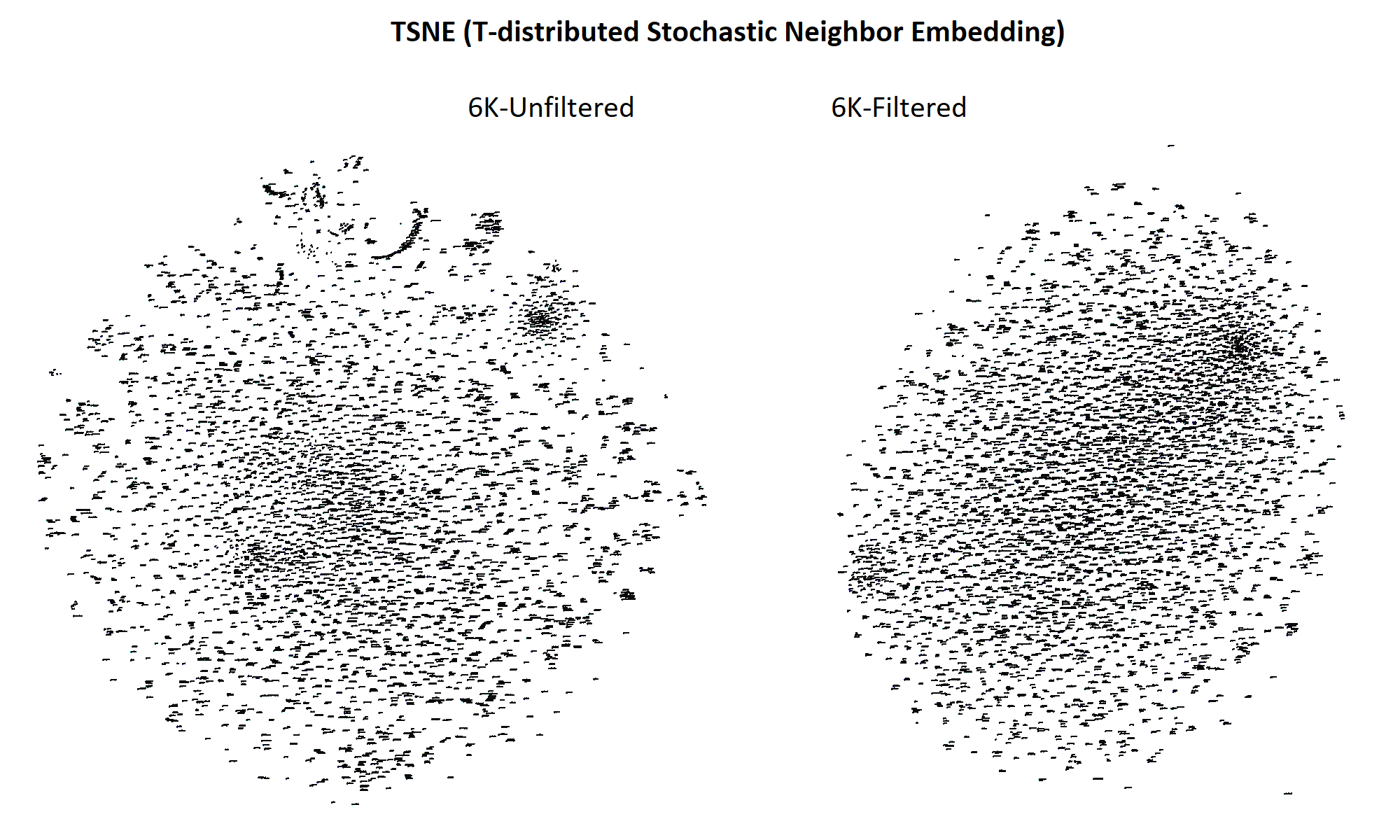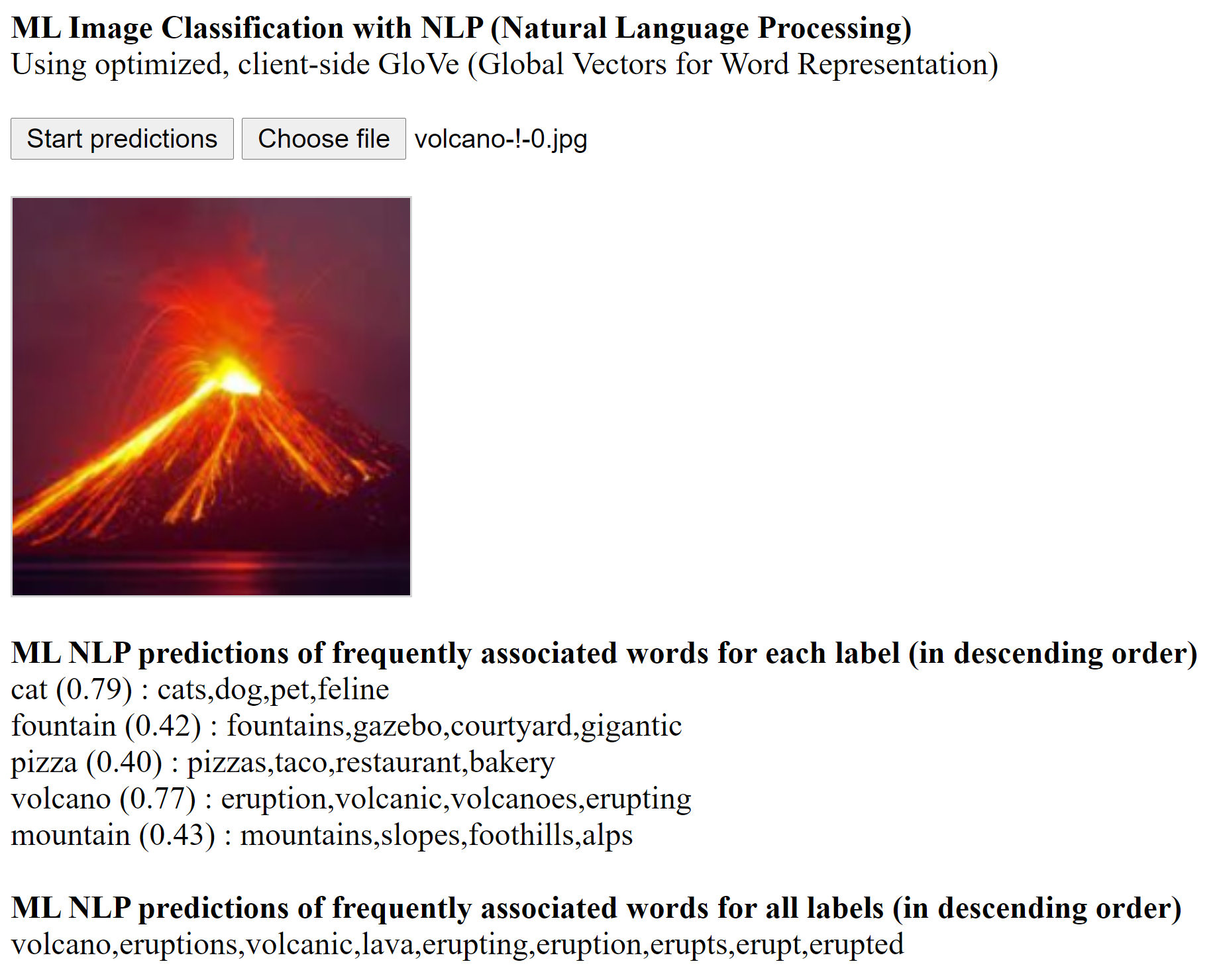This high-speed, low-footprint NLP (Natural Language Processing) EDGE-ML (Edge Machine Learning) JavaScript library can be used to enhance and derive more info from 'TensorFlow.js' (TensorFlow JavaScript) classification predictions. For example, Google Imagenet has 1000 classes and the labels consists of 1862 unique words. With this client-side NLP library, the textual description can be broaden to 60,000 words. One Edge-ML device that uses Google Imagenet is NVIDIA Jetson, see https://github.com/teavuihuang/jetson-emulator. This is accomplished by applying GloVe-based NLP (Natural Language Processing) on the classification labels. The most frequently associated words of the top labels are gathered, matched, ranked and sorted. This is essentially an ML charades expert that deduces what the unidentified object is by using the top labels as word clues.
GloVe (Global Vectors for Word Representation, https://nlp.stanford.edu/projects/glove/) is an unsupervised learning NLP algorithm for obtaining "word embedding" vector representations for words. Training is performed on aggregated global word-word co-occurrence statistics from a corpus, and the resulting representations showcase interesting linear substructures of the word vector space. In other words, GloVe observes that ratios of word-word co-occurrence probabilities have the potential for encoding some form of meaning.
The data in this ML-Edge library is pre-computed using the 60,000 most frequently used pre-trained word vectors from "glove.6B.300d.txt", which is generated from Wikipedia 2014 wikis and English Gigaword 5th Edition newswire text from 1995 to 2010. The original consists of 6 billion tokens, has 400,000 uncased vocabulary, 300-dimension vectors and is 1 GB in size. Loading and running massive sized models into a client-based web application would cause performance issues. In this client-side library, the 400,000 vocabulary is first reduced to 317,565 (~20% reduction) after filtering out URLs, digits, alphabets and non-ASCII characters. The Edge-GloVe library then uses 60,000 (top ~20%) of the most frequently associated words of the filtered data. The following shows a TSNE comparison based on a sample of 6000 vocabulary. TSNE (T-distributed Stochastic Neighbor Embedding) is a ML (machine learning) visualization algorithm that dipslays high-dimensional data in a low-dimensional space of two or three dimensions. Similar objects are modeled by nearby points and dissimilar objects are modeled by distant points.
TensorFlow suggests using a model that is of 30 MB in size or less in the browser. The NLP data in this ML-Edge library is customizable from 4-34 MB, depending on word-depth requirement from 10-100 of the most frequently used words of each vocabulary. To import the library, include the following lines in your client-side JavaScript code. The last line can be customized based on the search depth required, e.g. 'edgeglove.data_10.js' for up to 10 most-frequently used words, and 'edgeglove.data_100.js' for up to 100 most-frequently used words etc.
<script type="text/javascript" src="edgeglove.code.js"></script>
<script type="text/javascript" src="edgeglove.word.js"></script>
<script type="text/javascript" src="edgeglove.data_10.js"></script>The following code sample shows how the edge library can be used. 'labels' is a string containing the words to query. 'vocab_depth' is the number of most frequently associated words to include in the search & match. 'vocab_max' parameter is the maximum number of most frequently associated words to return in descending order.
var labels = "dog cat bird";
var vocab_depth = 4;
var vocab_max = 10;
result = edgegloveFreqWords(labels, vocab_depth, vocab_max);
// result = "pet,dogs,cat,cats,dog,birds,avian,flu"
